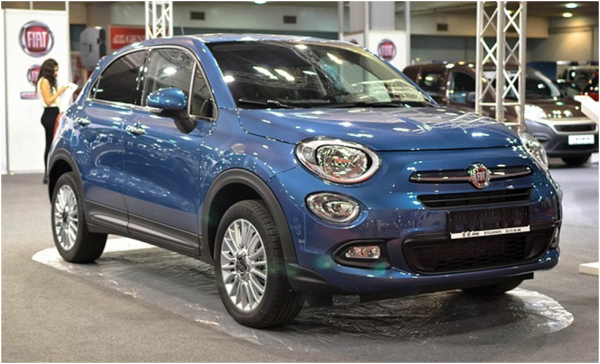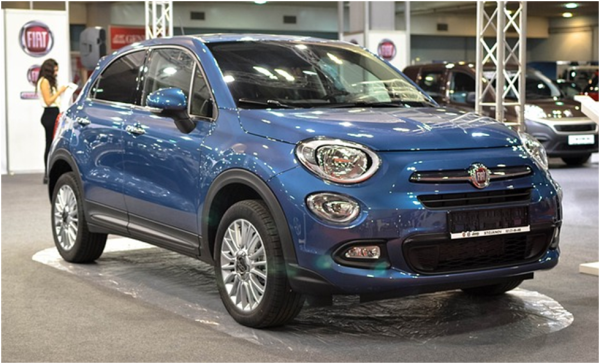The first attempt to combine an SUV with a road car was in 1948. At the time, the idea was to give the market the same features as a regular car but with a more comfortable interior. Hence, it wasn’t an off-road car yet. Further developments later brought what we now know as a crossover. Among the ones that would change the game was the Toyota RAV4 in the early 90s and the Honda CR-V soon after. Do these new coupes have any advantages over passenger cars or SUVs? Are some features in crossover SUVs or CUVs unpleasant? Let’s start with the advantages of a crossover and later discuss the cons.

Pros of a Crossover SUV
SUVs are popular. Unlike road cars, they have off-road capabilities. It is no wonder Ford sold 724,539 SUVs and only 49,470 passenger cars in 2021. Let’s look at the benefits of one type of SUV, sometimes called compact SUVs.
Lower Fuel Consumption
A crossover has a unibody built on a car chassis. It’s heavier than a road car but lighter than an SUV built on a truck chassis. Therefore, it consumes less fuel than an SUV while giving you the benefits of off-road driving.
For example, a 2WD Honda-CR-V uses 21 mpg on city roads and 28 mpg on the highway. Further, its combined consumption is 24 mpg. Another example is the Toyota Highlander, with its consumption of 28 mpg on city roads.
This frame isn’t only good for fuel saving because it makes it easier to maneuver city roads and parking lots. Places that’d give you trouble with a full-size SUV become easy to access with a crossover. On top of that, it’s shorter than an SUV, so there will be more parking spaces.
Stability
A crossover is more stable behind the wheel than a traditional SUV because the latter’s high center of gravity increases the likelihood of rolling over.
More Seating Space
A crossover SUV gives you more seating space than a regular car giving you better protection in a crash. It has more room from the chassis to the seats, which protects occupants from the impact of frontal car crashes. Statistically, these crashes make up most occupant deaths.
Additionally, even though you can get the third row in an SUV, the third row in a crossover model can be more spacious.
For example, a Ford Explorer has 42.9 inches of legroom in the driver’s seat, 39.5 inches for the second row, and the third row is as comfy with its 33.3 inches of space. If that’s not enough for you and your passengers, there are about 38.5 inches of legroom in the second row of a Mercedes-Benz GLS and 35 inches in the back row.
Better Visibility

Driving a crossover gives you as much visibility as a traditional SUV, as the driver’s seat has an upright seating position. It is better than what a passenger car provides.
More Affordable
A crossover is more affordable than a traditional SUV, even though it offers similar features to a sports utility vehicle. Further, you have more ways to customize a crossover as manufacturers build it to satisfy a broader market.
Family-friendly
Families need more seating and storage space. As such, a crossover model has extra seating space than a road car and more cargo space when you lay the second row of seats flat. For example, a Chevrolet Equinox has 29.9 cubic feet of space behind the second row of seats.
When you fold this row, you have about 63.9 cubic feet. It has this extra space despite having the frame of a regular car. On top of that, a crossover has more trunk room than a sedan or other road car.
Comparing a Jeep Grand Cherokee with a Chevrolet Suburban shows you the difference in towing capacity and how close crossovers are to the capability of full-size SUVs. This Jeep is one of the favorites in the United States for its exceptional features. It can tow about 7,200, only around 200 pounds less than a Chevrolet Suburban.
The Not-so-good Side of a Crossover SUV
The cons vary from one crossover SUV model to the other. For example, even though many have good legroom, others don’t live up to that expectation. Some may have more legroom in the second row at the expense of passenger comfort in the back row.
One example is the 2017 Nissan Pathfinder, which has over 40 inches for the front and second rows, while passengers in the back seat do with about 30.7 inches. Let’s mention more features that aren’t pleasing to some crossover SUV owners.
Maintenance
You may spend more on fuel since a crossover is heavier and larger than a sedan. It may also translate to higher maintenance costs for extra fluid changes and inspections since many crossovers are all-wheel drive cars. It’ll be in addition to regular maintenance tasks, plus the off-road capability means you’ll use the car differently than a road car.
Hence, you may change how often you get your brake pads replaced because of the new driving conditions. Most people do it after 10,000 to 20,000 miles, but it might be a different case in rough terrain.
Front Wheel or All-wheel Drive Mode
Most crossovers have front-wheel or all-wheel drive systems. All-wheel is excellent in driving extremes like rain and snow. But 4WD improves the traction and power in such extreme conditions. If you want to use the crossover for city driving, with occasional driving in the harsh weather of off-road regions, you’ll have to spend more to stock both.
Lower Load Capacity Than an SUV
If you’re looking for the towing capacity of an SUV, a crossover won’t be the best option. As much as it can tow more than a passenger car, it can’t be as efficient as SUVs with hauling and towing capabilities for off-road driving.
Final Thoughts
When crossover SUVs hit the market, they attracted people who wanted the benefits of an SUV but in a car that wouldn’t consume much fuel. These cars, also called CUVs, borrowed SUV features like ground clearance and a spacious interior.
Additionally, they took several features of passenger cars, such as engine and suspension components. Therefore, crossovers are the alternative when you don’t want a full-size SUV but still want more legroom and cargo space than a sedan.
The disadvantage is you give up on the 4WD system of an SUV and may incur higher maintenance costs than a passenger car.

